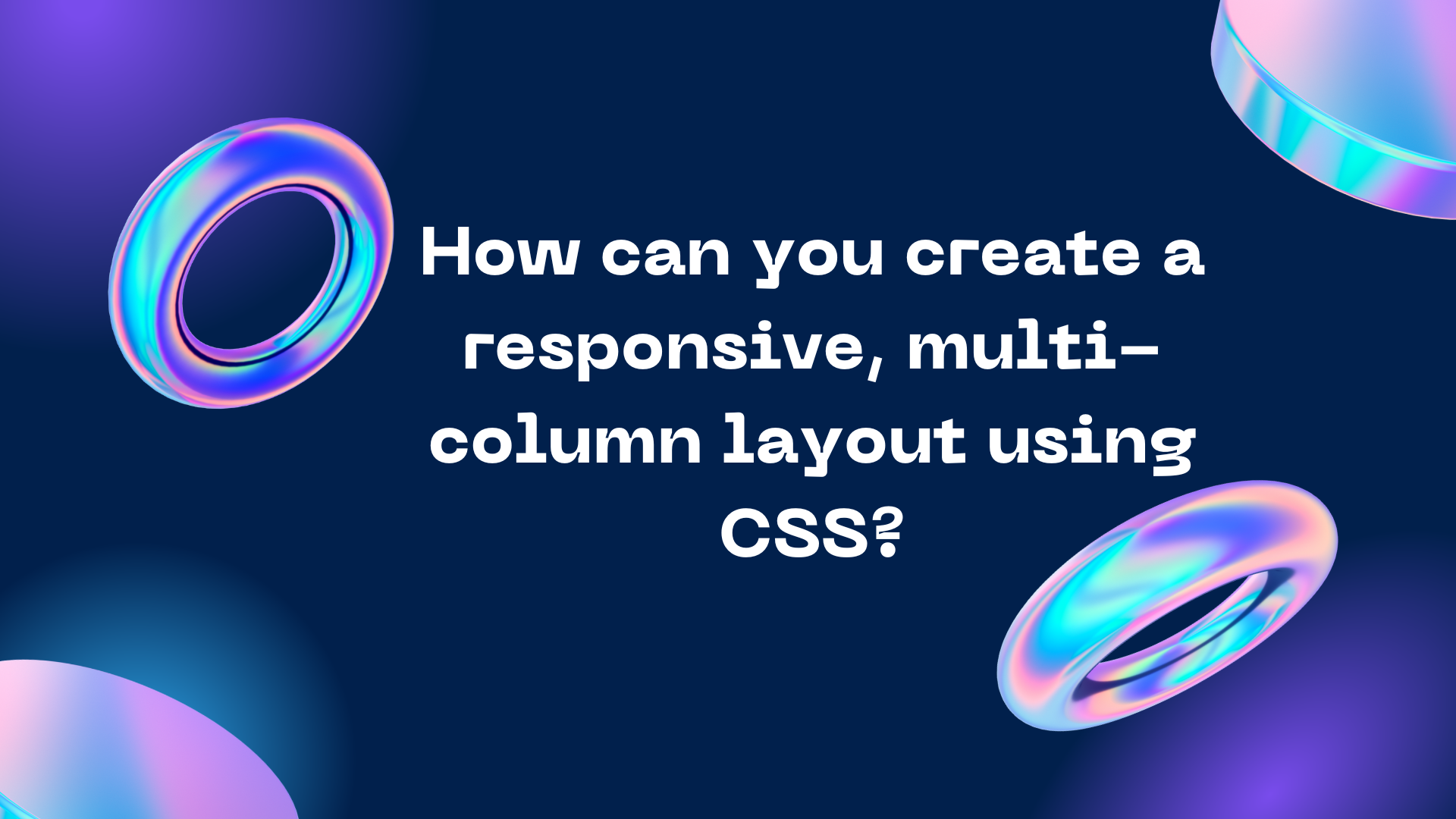How can you create a responsive, multi-column layout using CSS?
Creating a responsive, multi-column layout using CSS can seem daunting at first, but with the right approach, it can be achieved relatively easily. In this blog post, we’ll go over some basic principles and techniques that will help you create a responsive, multi-column layout that works across different screen sizes and devices.
1- Use CSS Grid
CSS Grid is a powerful tool that allows you to create complex layouts with ease. It works by creating a grid of rows and columns, and then placing content within those cells. You can define the size of each cell, as well as the space between cells.
To create a multi-column layout using CSS Grid, you can define the grid template columns property, which specifies the size and number of columns in the grid. For example:
.container {
display: grid;
grid-template-columns: repeat(3, 1fr);
}
This code will create a grid with three columns, each taking up an equal amount of space (1fr). You can adjust the number of columns and their sizes to fit your specific needs.
2- Use Flexbox
Flexbox is another powerful CSS layout tool that allows you to create flexible, responsive layouts. It works by allowing you to specify how content should be distributed within a container, based on available space.
To create a multi-column layout using Flexbox, you can set the display property of the container to flex, and then use the flex-wrap property to specify whether content should wrap onto multiple lines. For example:
.container {
display: flex;
flex-wrap: wrap;
}
This code will create a flexible container that wraps content onto multiple lines as needed. You can then use other Flexbox properties, such as justify-content and align-items, to control the distribution of content within the container.
3- Use Media Queries
To make your multi-column layout responsive, you’ll need to use media queries to adjust the layout based on screen size. Media queries allow you to apply different styles based on the width of the viewport, which is the visible area of the browser window.
For example, you might want to switch from a three-column layout to a two-column layout on smaller screens. To do this, you could use a media query like this:
@media (max-width: 768px) {
.container {
grid-template-columns: repeat(2, 1fr);
}
}
This code will change the grid-template-columns property to two columns when the viewport width is less than or equal to 768 pixels. You can use similar media queries to adjust the Flexbox layout as needed.
In conclusion, creating a responsive, multi-column layout using CSS requires a combination of CSS Grid, Flexbox, and media queries. By following these basic principles and techniques, you can create flexible, responsive layouts that work across different screen sizes and devices.
If you enjoy this article or find it helpful. Please like, comment, and share this post.




Comments
Post a Comment